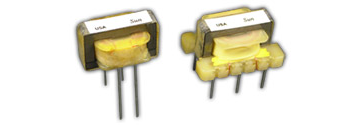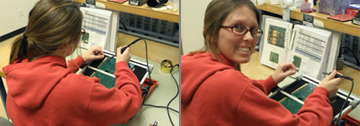
Application Profile – Medical Equipment
STC has provided electronic components for medical equipment used in the healthcare industry since its inception as a company in 1986. Since that time, we have expanded our product portfolio to include components for a increasingly diverse range of medical devices—from medical imaging equipment to medical beds to devices such as Peripheral Nerve Stimulators (PNS).
The PNS is used along with the delivery of anesthetic agents and is considered essential in measuring the patient’s neuromuscular state, thus allowing the administrator to appropriately administer the dosage of the relaxant being delivered. The clinical signs of neuromuscular recovery, such as the ability to lift the head, sustain a hand squeeze, and open the eyes cannot be elicited during the course of anesthesia alone. However, with the aid of a PNS, the patient’s neuromuscular state can be more easily evaluated by the stimulation of the nerve.[1]
Typically, the stimulator is superficially placed near the ulnar nerve, facial nerve, or the posterior tibial nerve. When the nerve is stimulated, the intensity of patient response, shown by the twitch of the thumb, indicates the degree of neuromuscular relaxation. Maintaining the proper degree of relaxation helps minimizes the risks in the postoperative period and maintains patient safety.
Through the years, the PNS has undergone several refinements which have led to new types of nerve stimulation such as cranial nerve stimulation and spinal nerve root stimulation.[2] Studies indicate that neuropathic pain responds well to nerve stimulation. The PNS works well in relatively new remedies for neuromodulation such as migraines, headaches, and even fibromylgia.[3]
The PNS has been successfully applied in clinical situations for chronic pain in extremities, neck, lower back, chest, abdominal wall, head, and face regions.[4]
Transformers used in PNS unitsWith electronic components, like those for the PNS, there are numerous factors to consider: stimulus frequency, electrode type, position and polarization, stimulus intensity, duration and waveform.
In the design of these electronic components, all of the above factors are addressed by our lead technical staff, the design process begins, and the components are made to customer specification.
All STC products are made in the USA at our ISO 9001:2008 registered plant in McLeansboro, IL. As with all components produced by STC, components made for medical equipment follow our rigid quality-control system and are 100-percent tested to ensure they meet both customer specifications and our own quality standards.
- Hudes Elliot MD and Lee, Kwok C. M ENG MD PH D. “Clinical Use of Peripheral Nerve Stimulators in Anaesthesia.” Canadian Journal of Anaesthesia September 1987: p. 525
- Stuart, RM and Winfree, CJ. “Neurostimulation Techniques for Painful Peripheral Nerve Disorders.” Department of Neurological Surgery – Columbia University Medical Center, New York 2009. PMID: 19064184 2009. Print.
- Slavin, KV. ” Peripheral Nerve Stimulation for Neuropathic Pain.” Department of Neurosurgery – University of Illinois at Chicago, 2008. PMID: 18164488. Print.
- Rasskazoff, SY and Slavin, KV. “An Update on Peripheral Nerve Stimulation.” Department of Neurosurgery – University of Illinois at Chicago, 2012. PMID: 23111288. Print

STC Employee Profile
It’s not just ISO certifications and customer-satisfaction metrics that tell the story of STC. Looking beyond those measurements, it’s the employees of STC that enable us to continue fulfilling customer expectations. This month, we are presenting a profile of one such employee, STC’s Courtney Webb.
Courtney first started working at STC in 2004, only to move to North Carolina nine months later. After two years in North Carolina, and the birth of her daughter, Courtney moved back to Illinois and returned to STC in the summer of 2006.
For her first four years at STC, Courtney worked primarily in the Transformer Production department, making literally hundreds of thousands of individual transformers. However, when asked how many different transformer models, Courtney stops talking about numbers and instead talks about customers and the products in which various models were used.
In 2009, Courtney started splitting time between transformer production and the electronics department, assembling through-hole components for STC’s printed-circuit-board products. In addition to circuit board assembly, Courtney also produces the cables and connectors used for PCB products. She now spends 90 percent of her time in electronics, where she’s continued to show her trademark attention to detail.
“We have very good work instructions, but there are other things to watch for when you’re working on electronics,” Courtney says. “A clean work environment is really important. It only takes a small bit of fuzz to interfere with a connection so we have to make sure everything’s clean.”
Outside of work, Courtney enjoys watching family ball games, shopping, and spending time at the lake (during the summer at least). What’s her favorite thing about working at STC?
“It’s a relaxed atmosphere. We’re careful to get things right, but things are still pretty relaxed.”

